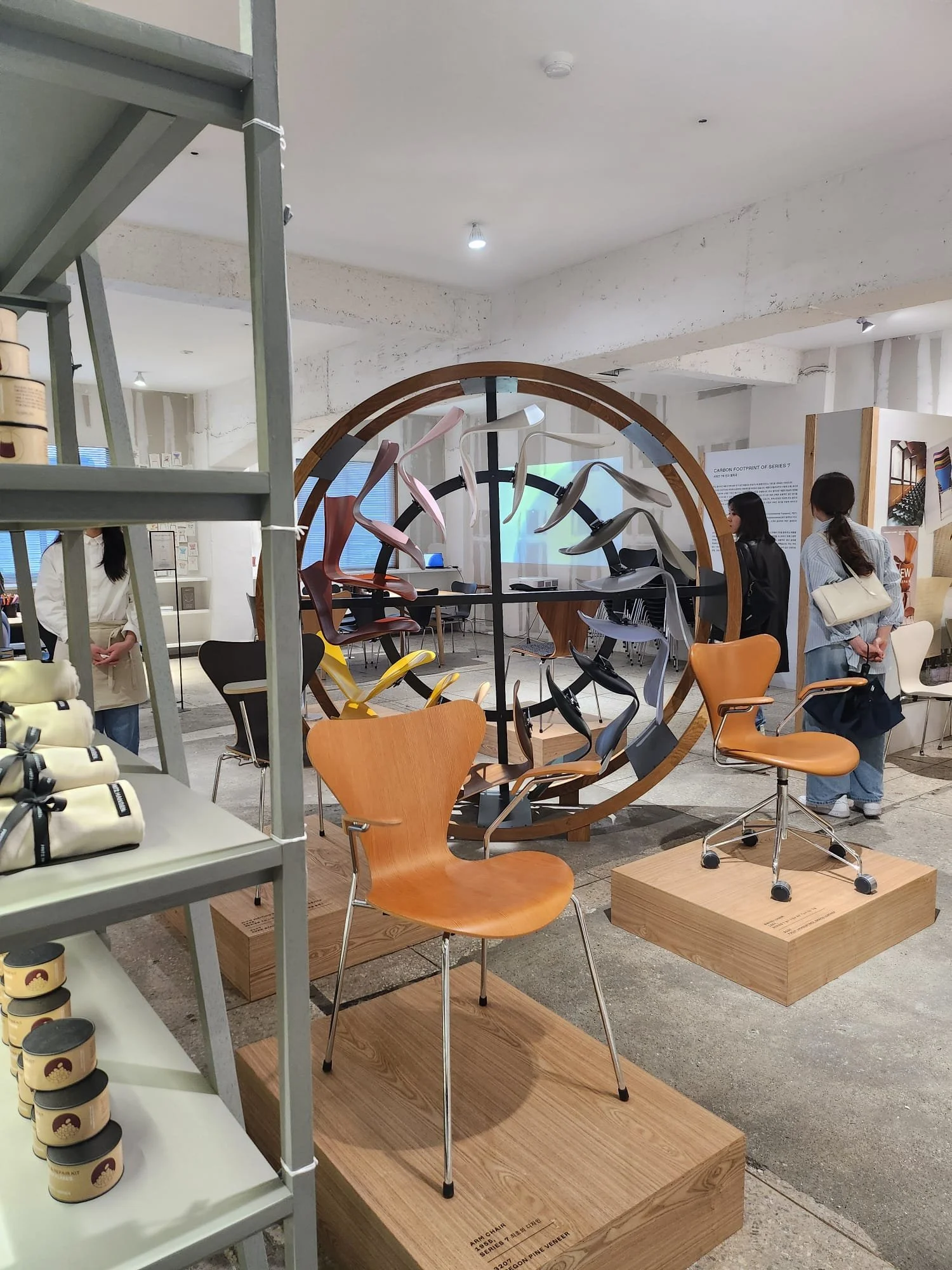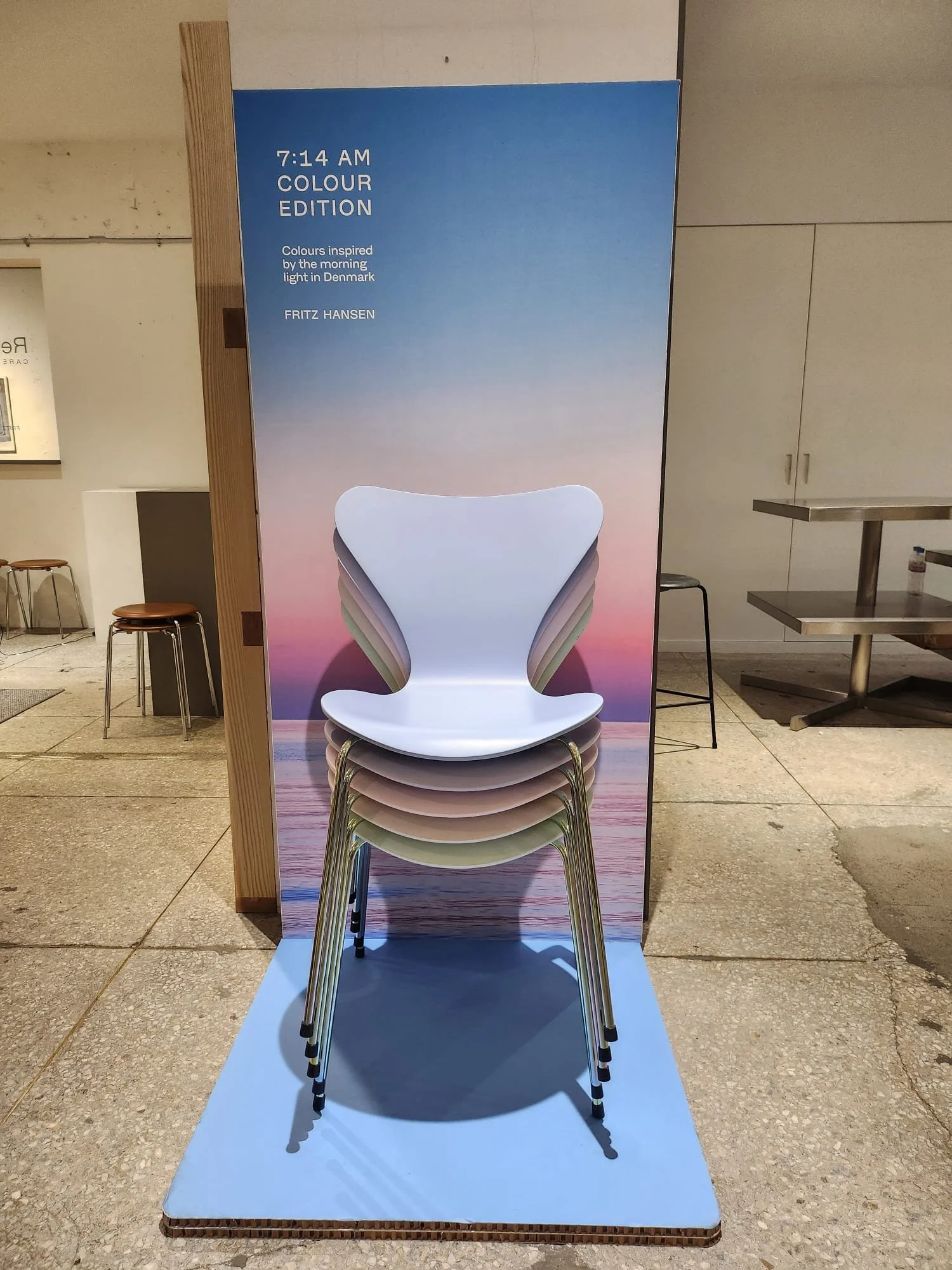A Case for the 4th R- Repair
The Series 7 chair (Model 3107 or Sevener) by Arne Jacobsen turns 70 this year! A true icon of 20th century design, it’s Fritz Hansen’s best-seller, with over 7 million units sold globally. Designed in 1955 by Danish architect and designer Arne Jacobsen, the chair is a masterpiece of modernist design— minimal and functional. The signature curved, one-piece seat and backrest are crafted from nine layers of pressure-moulded veneer – an advanced technique and remarkable construction at the time that gave the chair its elegant, lightweight silhouette without compromising strength. The Series 7 became an instant classic not just for its sleek look but also for its versatility. It’s stackable, durable, and adaptable to countless settings—from cafés and corporate offices to homes and libraries. It also had its moment in pop culture, most famously in a 1963 photo of Christine Keeler that forever cemented its status as a design icon. So, I chanced upon Fritz Hansen’s ReNEW Care & Repair pop-up event – a celebration of this timeless chair. The pop-up featured a brief history of the Series 7 on poster boards, a hands-on workshop where owners could repair and refurbish their chairs and a shelf stocked with repair kits: gloves, gliders, lacquer, laminate cleaner and more. We are all familiar with the three Rs – Reduce, Reuse and Recycle – yet the fourth R – Repair, is far less ingrained. This is a meaningful campaign, grounded in sustainability and circular economy ideals. But it also made me reflect: how often do we genuinely care for objects the way they deserve? Why have we let the culture of mending and repairing slip away? Perhaps the decline of repair culture is tied to broader economic and societal shifts. In the post-war era, especially in Europe, repair and maintenance were second nature. People lived by a ‘make do’ mentality, using creativity to extend the lives of their belongings. A chair was not just an object but a durable household staple, treated with respect and sometimes passed down and treasured as an heirloom. But as consumer economies expanded and mass production drove prices down, it became cheaper—and far more convenient—to buy new rather than repair. This shift has fundamentally altered our relationship with things. As sociologist Zygmunt Bauman notes in his concept of liquid modernity, we increasingly favour the new and the now, often discarding objects (and at times, even relationships) as soon as they show signs of wear. Today’s hyper-consumerist generation prioritises pristine aesthetics; the idea of repairing something old often feels like an afterthought, if it’s considered at all. The post-war Britain ‘make do and mend’ campaign poster, 1939 – 1945 from the National Archives
Yet some cultures have kept repair traditions alive. In India, the jugaad mentality celebrates ingenious, low-cost fixes. In Japan, the art of kintsugi restores broken pottery with gold, turning flaws into features. These examples remind us that repair is not only practical but also philosophical—a way to engage with the impermanence of material things and to affirm their value. When we mend a broken object, we resist the notion that disposability and reaffirm care for the things we live with or use.Closer to home, I have been encouraged by how Seoul embraces vintage wear. Weekends in Dongmyo are bustling with people scouring for pre-loved shoes, bags, sportswear, ceramics and even old rice cookers. Extending the life of goods by decades, thrifting has become a kind of adult treasure hunt. Can we do the same for furniture? How might we normalise a culture of repair for the objects we live with every day? Imagine repair workshops in every neighbourhood, where people learn hands-on skills – whether it’s sewing, upholstery, carpentry, electronics or even ceramics restoration. We could cultivate a community of care, empathy and craftsmanship for the objects that shape our daily lives.
After all, good design lasts only as long as the care we give it.





